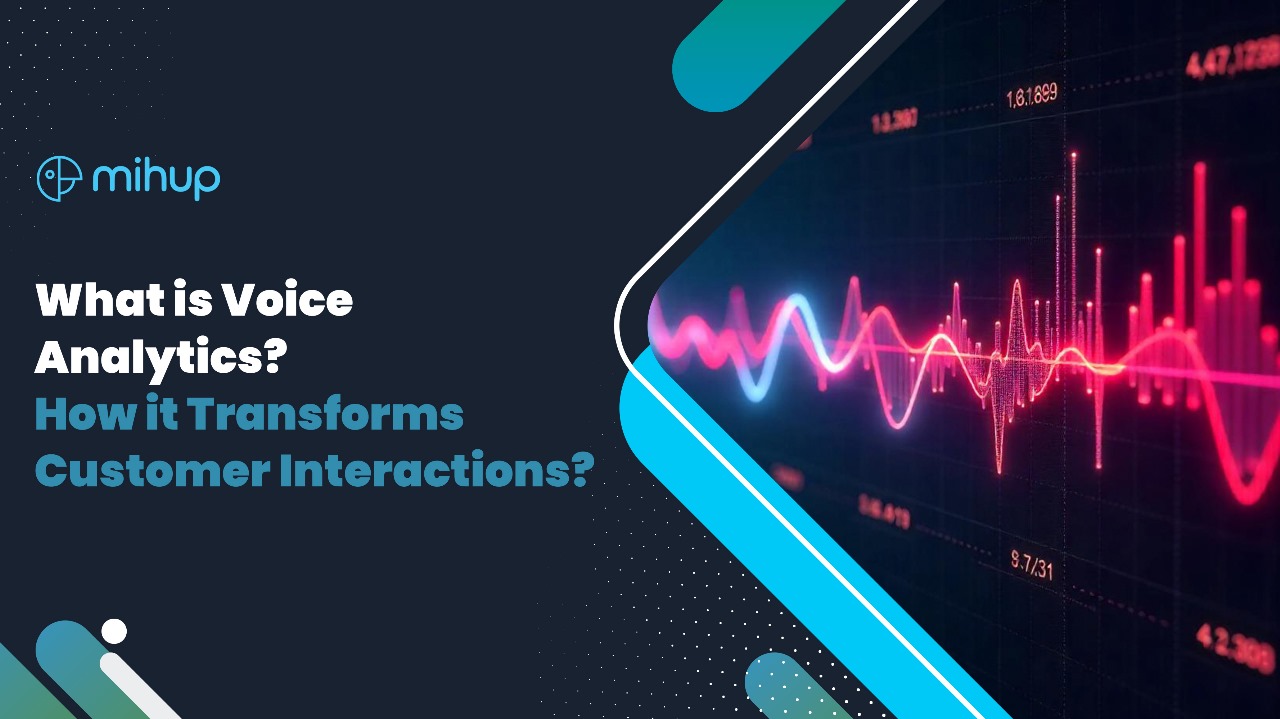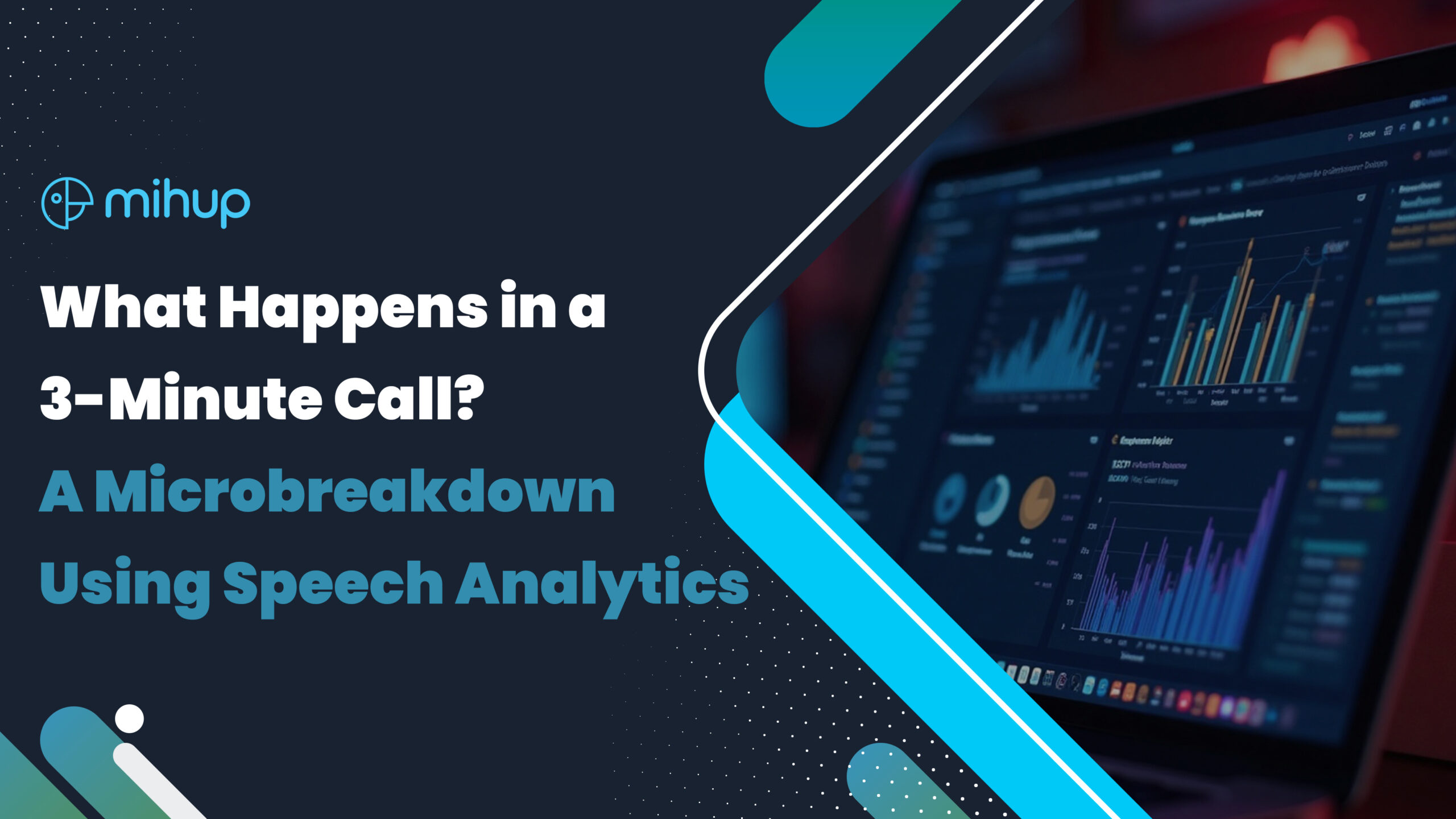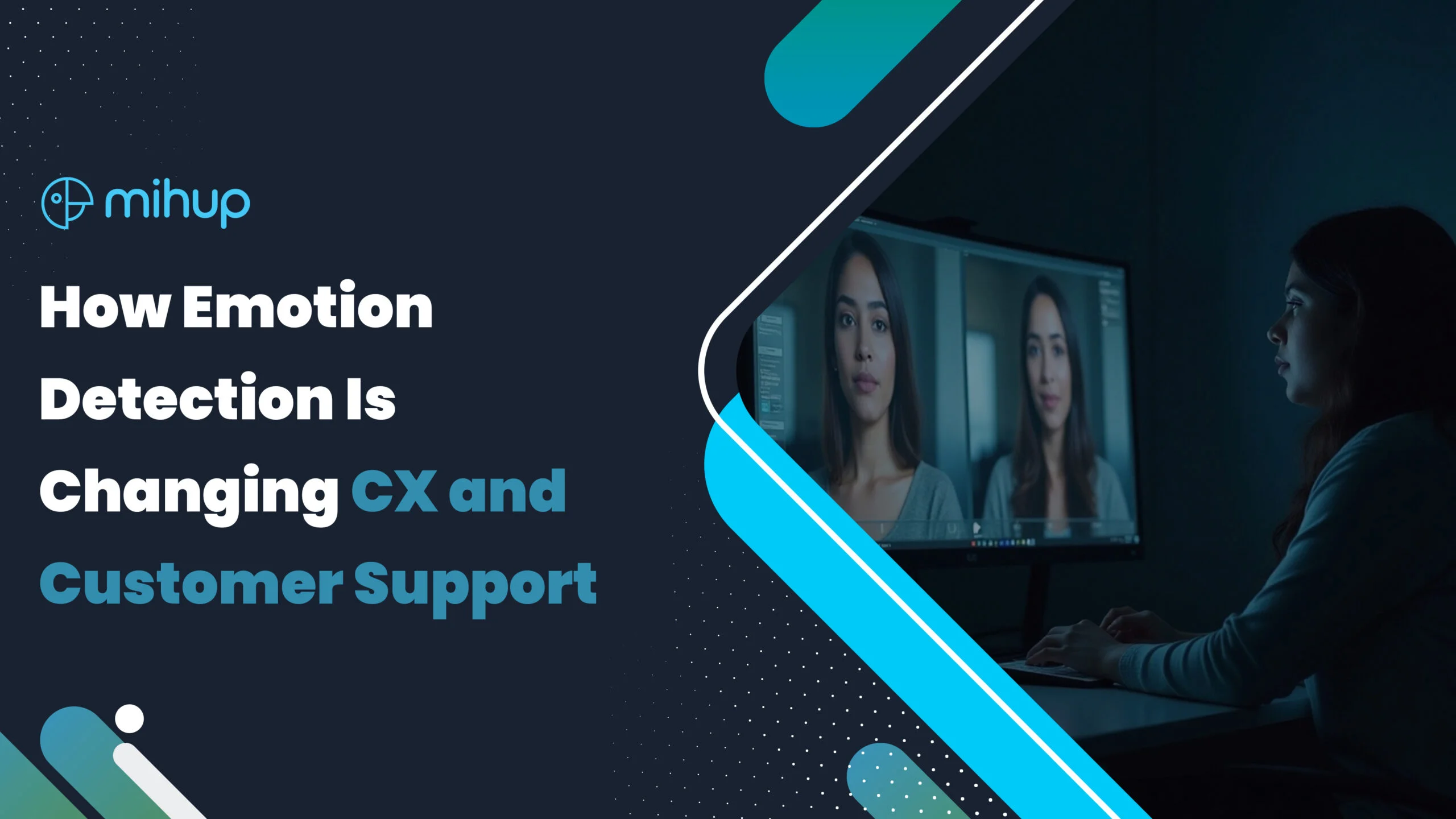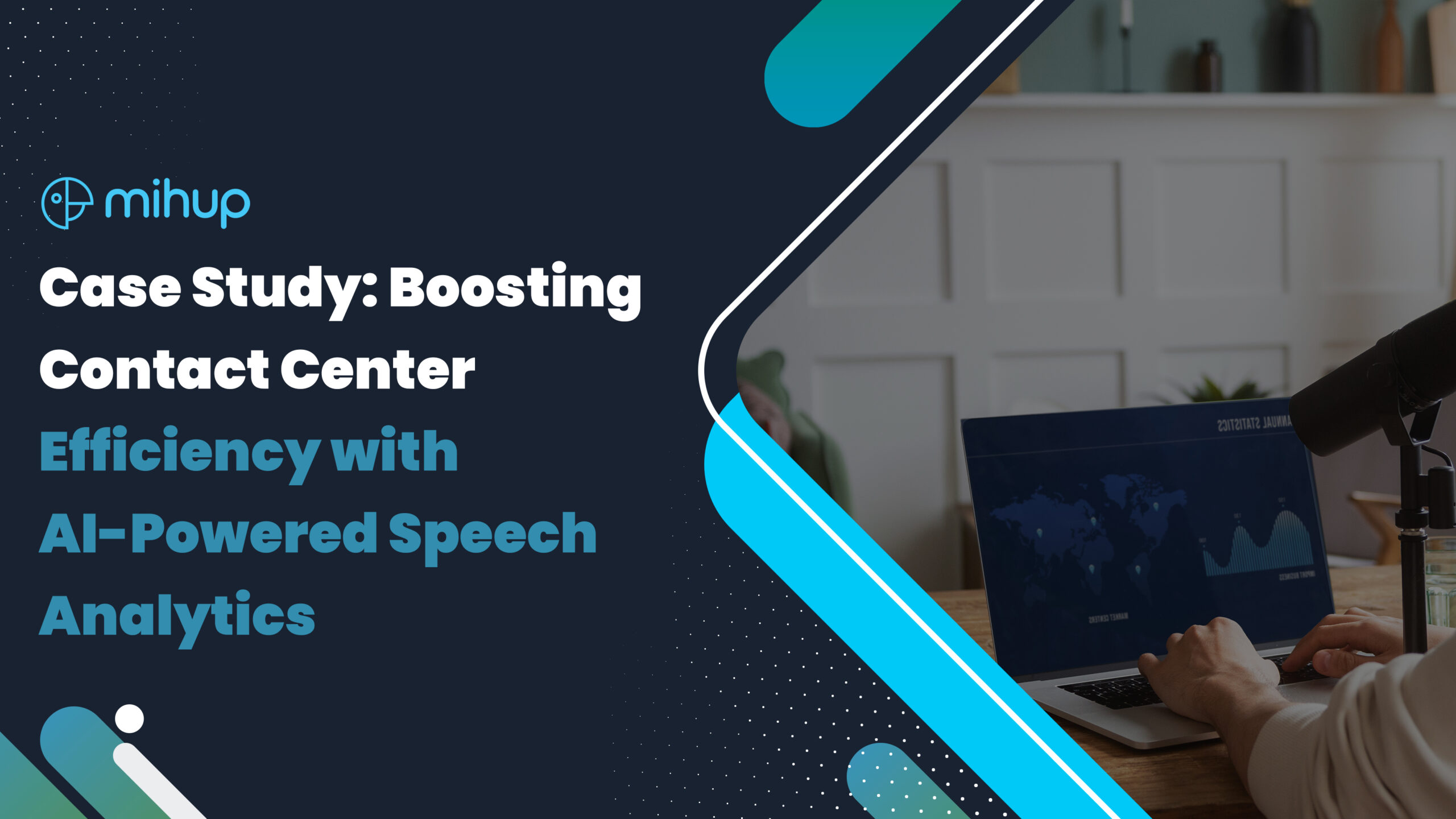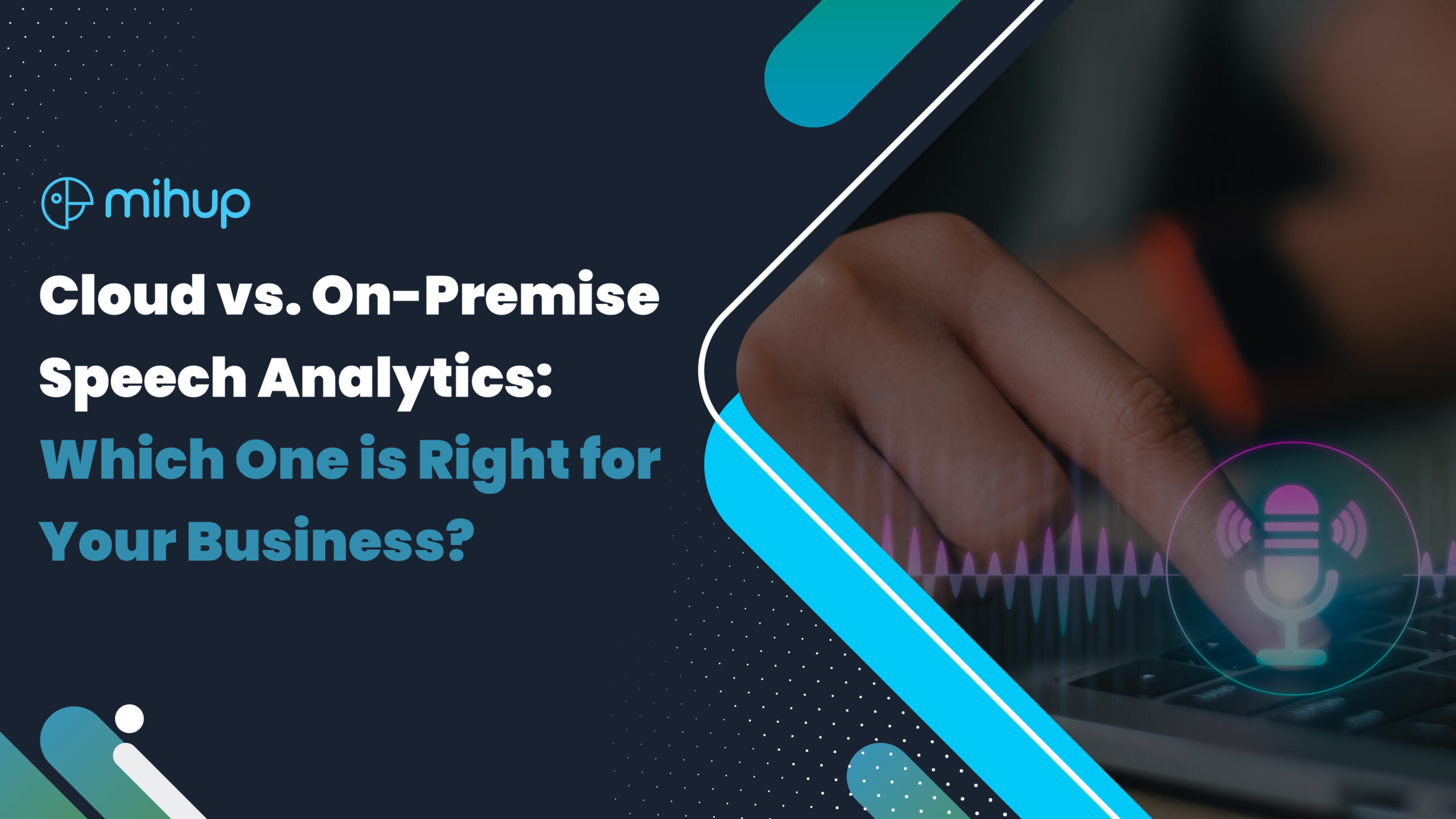Voice analytics is an advanced technology that listens to and analyzes voice data from customer interactions. It helps businesses understand their customers better, improve service, and make smarter decisions. By using this tool, companies can enhance customer experiences, make their operations more efficient, and grow their business.
The Growth of Voice Analytics
Voice analytics has come a long way. In the beginning, it focused only on turning speech into text. Today, it can understand the meaning behind words, detect emotions, and figure out what customers want. Modern voice analytics uses technologies like voice recognition, natural language processing (NLP), and artificial intelligence (AI) to gain deep insights into customer behavior and needs.
Voice Analytics vs. Speech Analytics
Voice analytics and speech analytics are often used interchangeably but are distinct. Here’s a clear comparison:
| Feature | Speech Analytics | Voice Analytics |
| Purpose | Converts speech to text. | Understands emotions and behavior. |
| Data Type | Structured data like text. | Both structured and unstructured data, including tone and pitch. |
| Analysis | Focuses on words. | Examines tone, emotion, and intent. |
| Technologies | Speech recognition, NLP. | Speech recognition, NLP, AI, and sentiment analysis. |
| Outcome | Finds keywords and patterns. | Understands feelings and moods to provide actionable insights. |
Benefits of Voice Analytics in Contact Centers
Voice analytics is revolutionizing the operations of contact centers by unlocking actionable insights and enabling more data-driven decision-making. Here’s a closer look at the key benefits:
- Enhancing Efficiency and Reducing Costs
Voice analytics automates time-intensive tasks like transcriptions, sentiment analysis, and keyword detection. By providing real-time insights, managers can shift their focus from manual data review to implementing strategic improvements. This technology:
- Reduces call handling times by offering actionable suggestions to agents during live calls.
- Automates quality assurance processes, enabling consistent monitoring without additional resources.
- Speeds up decision-making by identifying recurring issues or opportunities through trend analysis.
Example: Companies report up to a 30% reduction in operational costs when implementing voice analytics, as it minimizes inefficiencies and reduces the reliance on manual evaluations.
- Strengthening Regulatory Compliance
Voice analytics ensures adherence to regulations by flagging non-compliance risks in real-time.
- It detects specific phrases or omissions that might lead to legal issues, such as failing to disclose terms of service.
- Monitors adherence to scripts designed to comply with industry standards (e.g., PCI, HIPAA).
- Provides an audit trail of conversations, useful for legal or regulatory reviews.
Example: Quick detection and resolution of compliance issues prevent costly penalties and strengthen customer trust.
- Gathering Policy and Campaign Feedback
Customer tone, word choice, and emotional cues reveal how policies or campaigns are received. Voice analytics identifies patterns such as:
- Positive or negative sentiment shifts following a policy change.
- Common objections or concerns enable refinement of campaigns.
Example: Businesses using voice analytics have increased the success rates of campaigns by up to 20% by adapting strategies based on real-time customer reactions.
- Streamlining Complaint Tracking and Resolution
Voice analytics categorizes customer complaints and associates them with specific pain points. For example:
- It identifies recurring issues, such as billing disputes or technical glitches, and routes them to the appropriate department.
- Prioritizes high-impact complaints, enabling quicker resolution of issues that affect customer retention.
Example: Faster resolution of complaints has been shown to improve Net Promoter Scores (NPS) by up to 15%.
- Driving Product and Service Development
Voice analytics acts as a listening tool to capture unfiltered customer feedback. By analyzing conversations, companies can:
- Spot emerging trends in customer needs and expectations.
- Identify potential new product features or areas for service improvement.
Example: If customers frequently mention a desire for a specific feature, this feedback can guide product roadmaps, ensuring offerings align with market demand.
- Enabling Competitive Analysis
Voice analytics identifies mentions of competitors in customer conversations. This data provides insights into:
- Why customers are considering alternatives.
- Competitors’ perceived strengths or weaknesses.
Insight: By leveraging this information, businesses can refine pricing strategies, enhance features, or target dissatisfied competitor customers.
Voice analytics doesn’t just enhance operational efficiency; it also fosters a more strategic approach to customer experience, compliance, and business development, making it a must-have tool for modern contact centers.
How Voice Analytics Works
Voice analytics uses various technologies to provide actionable insights. Here’s how it works step-by-step:
1. Speech Recognition and Conversion
- Automatic Speech Recognition (ASR): Converts spoken words into text, creating accurate transcriptions for analysis.
- Text-to-Speech (TTS): Turns text back into speech, useful for systems like interactive voice response (IVR).
- Phonetic Analysis: Understands pronunciation and accents, improving accuracy.
- Word Spotting: Finds specific words or phrases in calls, helping identify important issues.
2. Natural Language Understanding (NLU) and Processing
- Syntax Analysis: Breaks down sentences to understand their structure.
- Semantic Analysis: Understands the meaning behind the words.
- Pragmatic Analysis: Interprets the context of conversations.
- Topic Modeling: Group conversations by topics to highlight customer priorities.
- Keyword Spotting: Finds specific terms to trigger actions or categorize calls.
Example: A customer, John, calls about a late delivery. NLP detects keywords like “late delivery” and “unhappy.” Syntax analysis breaks his concerns into actionable points, while pragmatic analysis detects frustration, prompting the agent to respond empathetically.
3. Emotion and Speaker Analysis
- Sentiment Analysis: Measures customer emotions to help agents adjust their approach.
- Acoustic Analysis: Examines tone and pitch to determine urgency or feelings.
- Speaker Diarization: Identifies and separates speakers in a conversation for clarity.
4. Data Management and Real-Time Analysis
- Audio Indexing: Tags important moments in calls for easy access.
- Real-Time Analytics Engine: Provides live insights, helping agents make informed decisions.
- Call Summarization: Creates summaries of conversations for quick reviews.
Challenges and Solutions in Voice Analytics
Voice analytics offers immense benefits, but implementing it effectively comes with its own set of challenges. Here’s a closer look at these obstacles, along with practical solutions and examples:
1. Low-Quality Audio
Challenge: Background noise, poor call connections, or muffled voices can reduce the accuracy of transcription and analysis. For example, a noisy contact center environment or a customer using a low-quality phone can lead to missed keywords or misinterpretations.
Solution:
- Implement advanced noise reduction and speech enhancement technologies to filter out background noise and clarify audio.
- Use high-quality microphones and encourage agents to ensure clear audio during calls.
- Regularly test and upgrade hardware and software to maintain sound quality.
Example: A contact center installed noise-canceling headsets and integrated noise suppression software, leading to a 20% improvement in transcription accuracy.
2. Regional Accents and Dialects
Challenge: Voice analytics tools may struggle to recognize diverse accents or local dialects. For instance, a system trained primarily on American English might misinterpret words spoken in a Scottish or Indian accent.
Solution:
- Train AI models using diverse datasets that include various accents, dialects, and speech patterns.
- Use customizable systems that allow businesses to refine language models based on their customer base.
Example: A global telecom company enhanced its voice analytics by incorporating recordings from customers in 15 regions. This improved the system’s ability to accurately transcribe and analyze conversations by 30%.
3. Limited Context Understanding
Challenge: AI systems sometimes fail to grasp nuances such as sarcasm, humor, or implicit meaning. For example, a customer saying, “Great, just what I needed,” in a sarcastic tone might be incorrectly logged as positive feedback.
Solution:
- Combine AI-driven analytics with human expertise to review and interpret nuanced interactions.
- Continuously improve sentiment analysis models by feeding them real-world examples of nuanced conversations.
Example: A retail company uses voice analytics to flag ambiguous customer comments, which are then reviewed by a quality assurance team. This dual approach ensures more accurate insights while training the AI system for future interactions.
4. Delayed Insights
Challenge: Some systems take hours or even days to process and analyze large volumes of data, delaying actionable insights. This can be a problem in time-sensitive industries like customer support, where rapid responses are critical.
Solution:
- Implement real-time analytics systems that process data during or immediately after calls.
- Optimize data storage and processing pipelines to handle high volumes of calls more efficiently.
Example: A financial services contact center switched to a real-time analytics solution, allowing managers to intervene in live calls when compliance issues were detected. This reduced regulatory risks and improved first-call resolution rates by 25%.
By addressing these challenges proactively, businesses can ensure their voice analytics systems deliver accurate, timely, and meaningful insights, enhancing both operational efficiency and customer satisfaction.
How Mihup Adds Value
Mihup Interaction Analytics (MIA) takes interaction analysis to the next level by leveraging advanced AI-driven voice analytics to decode customer conversations in real-time. By analyzing tone, sentiment, and spoken content, MIA uncovers hidden patterns, identifies customer pain points, and monitors agent performance with unparalleled precision.
Here’s how it adds value:
1. Comprehensive Coverage Across Call Types and Processes
Mihup Interaction Analytics effectively handles both inbound and outbound calls across three main contact center functions:
- Customer Support: Streamlines issue resolution by identifying recurring customer pain points and improving agent responses.
- Collections (Dues and Renewals): Analyze call patterns to improve customer compliance and optimize recovery strategies.
- Sales (Outbound): Provides actionable insights into customer preferences, boosting conversion rates.
Value Add: By applying Natural Language Processing (NLP) algorithms to 100% of calls, MIA ensures no interaction is overlooked, delivering granular insights that drive targeted improvements.
2. Overcoming the Quality Audit Bottleneck
Traditional quality assurance often relies on one quality auditor for approximately 20 agents, leading to limited call reviews and delayed feedback. Mihup Interaction Analytics addresses this pain point by:
- Automating Quality Audits: Processes and analyzes 100% of calls instead of sampling, ensuring a comprehensive evaluation.
- Advanced NLP Algorithms: Detects critical patterns, compliance breaches, and opportunities for improvement without manual intervention.
Example: A contact center previously auditing only 5% of calls was able to expand to full coverage, identifying key agent training needs and reducing compliance issues by 30%.
3. Transforming Insights Beyond Quality Metrics
Earlier systems focused primarily on quality evaluation. Mihup’s platform goes a step further by generating deeper insights to:
- Improve sales conversions by identifying the most effective sales pitches.
- Optimize processes by flagging inefficiencies and suggesting actionable improvements.
- Enhance customer satisfaction by analyzing sentiment and emotion trends in real-time.
Value Add: These insights empower managers to not only monitor but also elevate agent performance and overall operational efficiency.
4. Unified Platform for Data-Driven Decision Making
Unlike traditional BI tools that rely on external data sources, Mihup Interaction Analytics provides:
- A self-contained platform to process, analyze, and visualize 100% of the data.
- An integrated dashboard that delivers actionable insights across all contact center operations.
Value Add: This comprehensive approach eliminates the dependency on external tools, enabling seamless analysis and faster decision-making.
5. Sophisticated Process Parameters for Continuous Improvement
Mihup Interaction Analytics offers advanced capabilities for monitoring and refining contact center processes:
- Real-time analysis and feedback using Mihup Agent Assist, which delivers insights during live calls.
- Continuous updates to parameters and algorithms to stay aligned with evolving business needs.
Example: With real-time assist features, agents can adapt their approach on live calls, improving first-call resolution rates and boosting customer satisfaction.
Conclusion
Voice analytics is a powerful tool that helps businesses turn customer conversations into actionable insights. It enhances the customer experience, ensures compliance, and boosts operational efficiency. By investing in voice analytics, companies can transform their contact centers into strategic assets, gaining a competitive edge in the market. Businesses that embrace this technology are better positioned for growth, innovation, and exceptional customer satisfaction.
